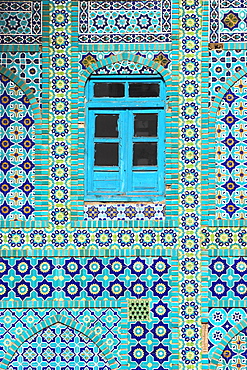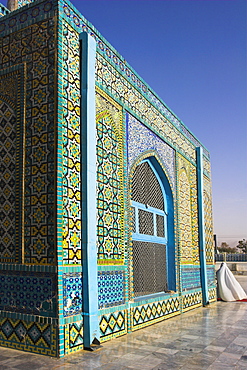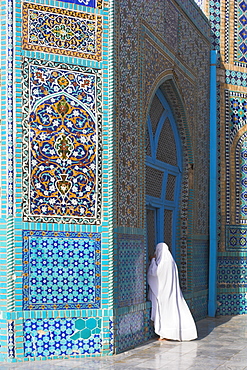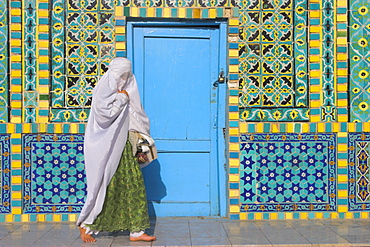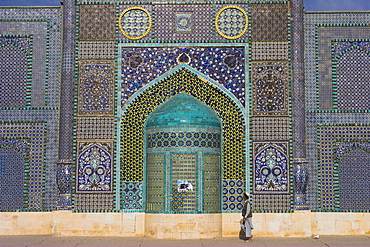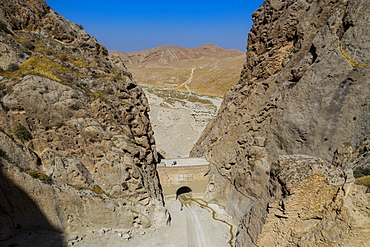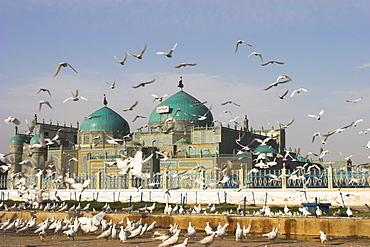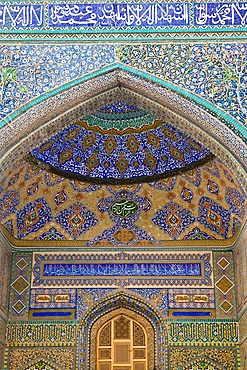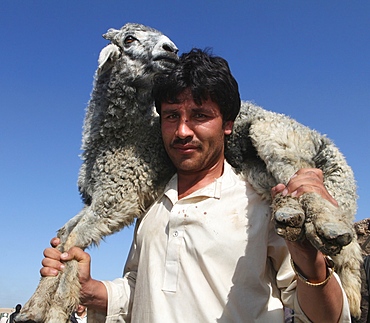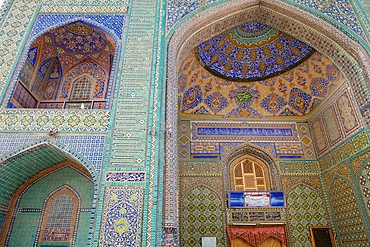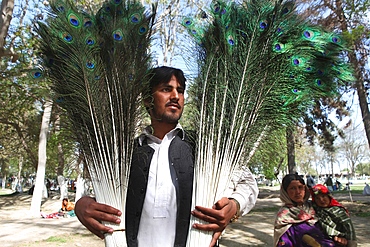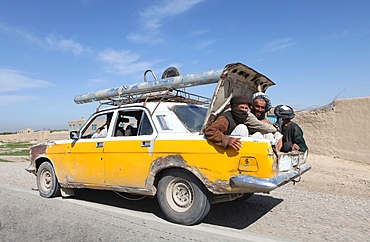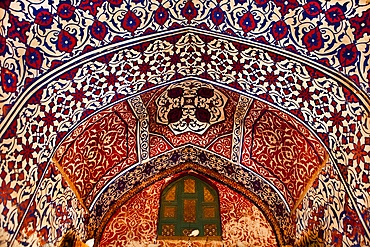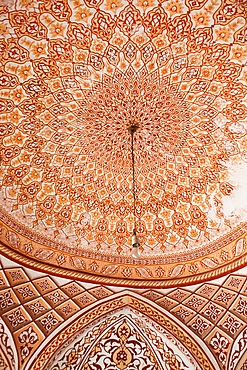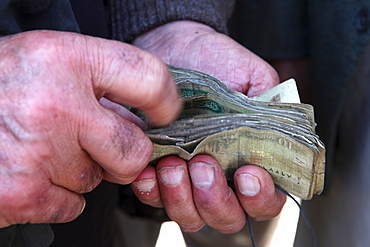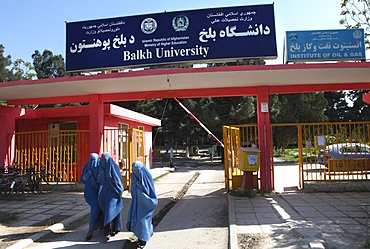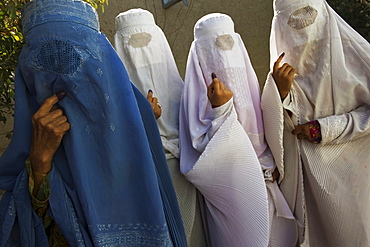Results
36 results found
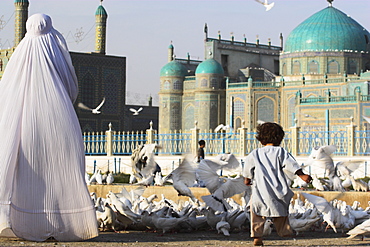
Lady in burqa feeding famous white pigeons whilst child chases them, Shrine of Hazrat Ali, Mazar-i-Sharif, Balkh, Afghanistan, Asia
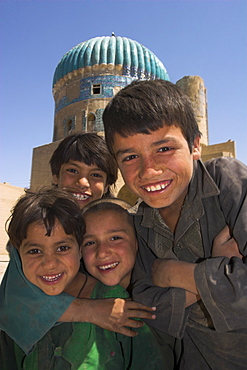
Children in front of the Shrine of Khwaja Abu Nasr Parsa, built in the late Timurid style, Balkh (Mother of Cities), Afghanistan, Asia
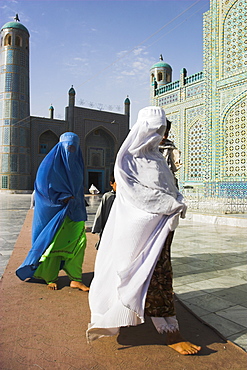
Pilgrims at the shrine of Hazrat Ali, who was assassinated in 661, Mazar-I-Sharif, Balkh province, Afghanistan, Asia
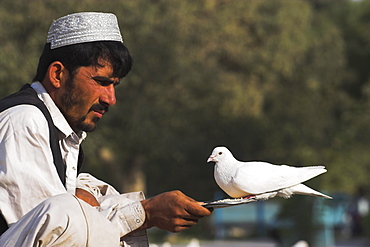
Man feeding the famous white pigeons, Shrine of Hazrat Ali, Mazar-I-Sharif, Balkh province, Afghanistan, Asia
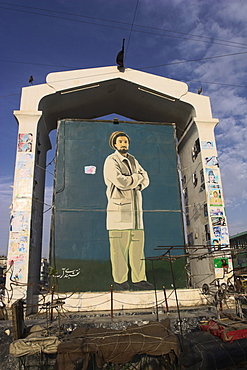
Memorial plaque of assassinated Mujahadin leader Ahmad Shah Massoud know as the ' Lion of Panshir' an Afghan National Hero, situated opposite the Shrine of Hazrat Ali, Mazar-I-Sharif, Balkh province, Afghanistan, Asia

Family looking at famous white pigeons at the shrine of Hazrat Ali, who was assassinated in 661, Mazar-I-Sharif, Balkh province, Afghanistan, Asia
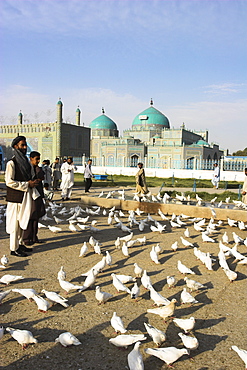
People feeding the famous white pigeons, Shrine of Hazrat Ali, Mazar-I-Sharif, Balkh province, Afghanistan, Asia

Street boys stand amongst the famous white pigeons with the necklaces they sell to make a living, Shrine of Hazrat Ali, Mazar-I-Sharif, Balkh province, Afghanistan, Asia
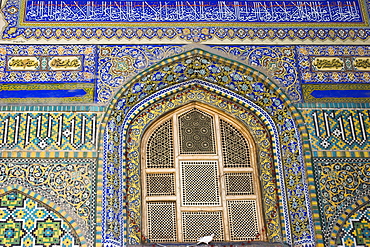
Famous white pigeon sits below window, Shrine of Hazrat Ali, who was assassinated in 661, Mazar-I-Sharif, Balkh province, Afghanistan, Asia
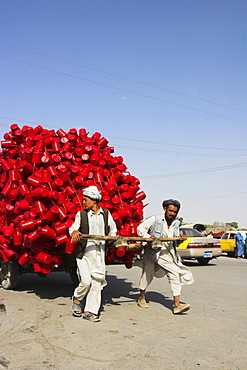
Men pulling wooden cart piled high with red water containers along road, Mazar-I-Sharif, Balkh province, Afghanistan, Asia
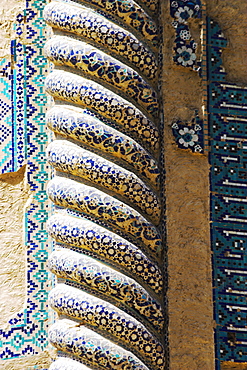
Unique Timurid corkscrew pillars of the Shrine of Khwaja Abu Nasr Parsa, Balkh (Mother of Cities), Balkh province, Afghanistan, Asia

Shrine at No-Gonbad Mosque (Mosque of Nine Cupolas) also known as Khoja Piada or Masjid-e Haji Piyada (Mosque of the Walking Pilgrim), dating from the 9th centruy AD, the earliest Islamic monument in the country, Balkh (Mother of Cities), Balkh province, Afghanistan, Asia
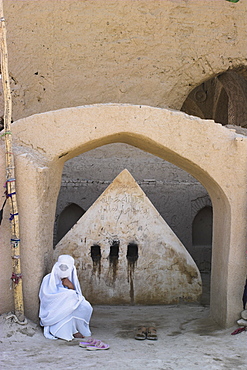
Lady visiting a possible early 8th Century tomb of a 19th century AD saint behind mosque for blesssing for childbirth/sickness, No-Gonbad Mosque also known as Khoja Piada or Masjid-e Haji Piyada, Balkh, Balkh province, Afghanistan, Iraq, Middle East

Shrine at No-Gonbad Mosque (Mosque of Nine Cupolas) also known as Khoja Piada or Masjid-e Haji Piyada (Mosque of the Walking Pilgrim), dating from the 9th centruy AD, the earliest Islamic monument in the country, Balkh (Mother of Cities), Balkh province, Afghanistan, Asia
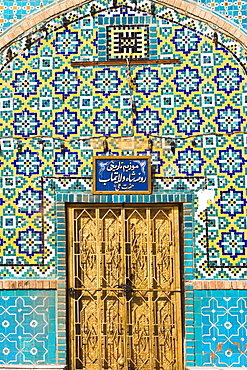
Tiling round door, Shrine of Hazrat Ali, who was assissinated in 661, Mazar-I-Sharif, Balkh province, Afghanistan, Asia

Tilework detail, Shrine of Hazrat Ali, who was assassinated in 661, Mazar-I-Sharif, Balkh province, Afghanistan, Asia
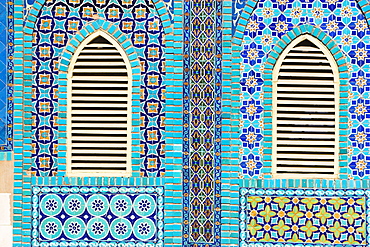
Tiling round shuttered windows, Shrine of Hazrat Ali, who was assissinated in 661, Mazar-I-Sharif, Balkh province, Afghanistan, Asia

Tiling round blue window, Shrine of Hazrat Ali, who was assissinated in 661, Mazar-I-Sharif, Balkh province, Afghanistan, Asia
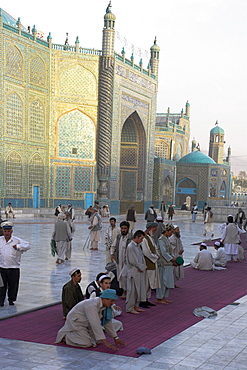
Pilgrims outside the Shrine of Hazrat Ali, who was assissinated in 661, Mazar-I-Sharif, Balkh province, Afghanistan, Asia
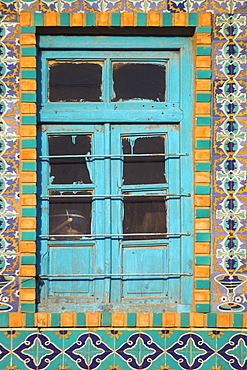
Tiling round blue window, Shrine of Hazrat Ali, who was assissinated in 661, Mazar-I-Sharif, Balkh province, Afghanistan, Asia

Shrine of Hazrat Ali, who was assassinated in 661, Mazar-I-Sharif, Balkh province, Afghanistan, Asia
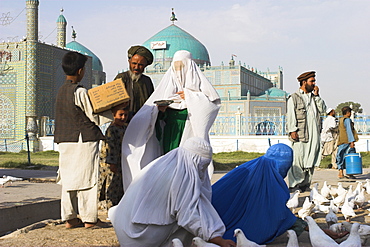
Family feeding the famous white pigeons, Shrine of Hazrat Ali, Mazar-I-Sharif, Balkh province, Afghanistan, Asia

Mosque at the ruins of Takht-i-Pul, once an elite suburb of Balkh built by Amir Afzal Khan in 1855, Balkh (Mother of Cities), Balkh province, Afghanistan, Asia

Street boy selling necklaces at the Shrine of Hazrat Ali, Mazar-I-Sharif, Balkh province, Afghanistan, Asia

Pilgrims at the Shrine of Hazrat Ali, who was assassinated in 661, Mazar-I-Sharif, Balkh province, Afghanistan, Asia

Mosque interior at the ruins of Takht-i-Pul, once an elite suburb of Balkh built by Amir Afzal Khan in 1855, Balkh (Mother of Cities), Afghanistan, Asia
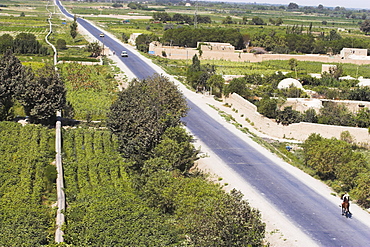
View of man riding horse along road, taken from army checkpoint at remains of a Buddhist stupa, Top-I-Rustam, Balkh (Mother of Cities), Afghanistan, Asia
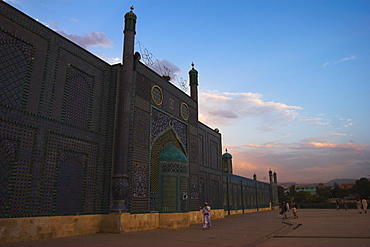
The Shrine of Hazrat Ali, who was assassinated in 661, Mazar-I-Sharif, Balkh province, Afghanistan, Asia

A young woman prepares to vote for presidential and provincial candidates in national elections, Sultan Razia Girls High School, Mazar-i Sharif, Afghanistan on August 20, 2009.
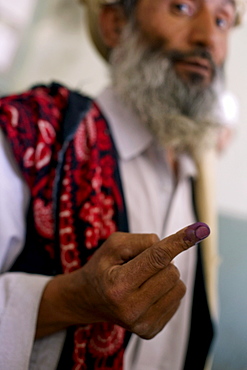
Afghan men vote on the day of presidential and provincial elections in Mazar-i Sharif, Afghanistan, August 20 2009
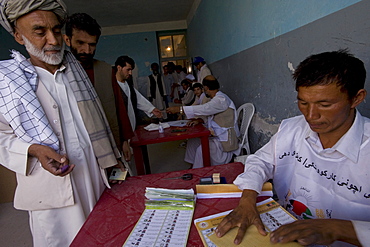
Scenes from voting on the day of presidential and provincial elections in Mazar-i Sharif, Afghanistan.

Women in burqas flock like doves to the entrance of the main mosque at the Blue Mosque complex, Mazar-i-Sharif, Balkh Province, September 23, 2002. Wednesday mornings are reserved for women to come and worship at the mosque.Elaborate tilework and decorated spires adorn the mosque, also known as the Shrine of Hazrat Ali (Hazrat Ali was the son-in-law of the prophet Mohammed), who is believed to be buried here. The shrine, of particular importance for Afghanistan's Shi'ite Muslims, was first built in the 12th century, destroyed by Genghis Khan, and rebuilt in 1481. The current mosque, considered by some to be one of the most beautiful in Central Asia, is a modern restoration.
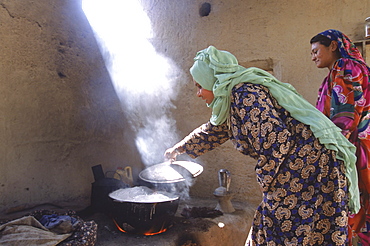
Young Tajik women cook on clay stove in the compound of an extended family in Mazar-i-Sharif, Balkh Province. The kitchen is open air, with wood fires stocking clay ovens and stoves, which allow several huge pots to be simmering at once.
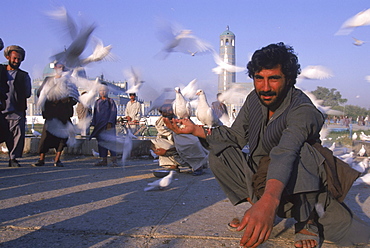
A man feeds white doves at dawn in front of the Blue Mosque, Mazar-i-Sharif, Balkh Province. Hundreds of doves, who are fed by worshippers and tended by special workers, live around the mosque, and it is thought that the place is so holy that a grey or brown dove will turn white if it lands on the Mosque. The mosque is also known as the Shrine of Hazrat Ali (Hazrat Ali was the son-in-law of the prophet Mohammed), who is believed to be buried here. The shrine, of particular importance for Afghanistan's Shi'ite Muslims, was first built in the 12th century, destroyed by Genghis Khan, and rebuilt in 1481. The current mosque, considered by some to be one of the most beautiful in Central Asia, is a modern restoration.
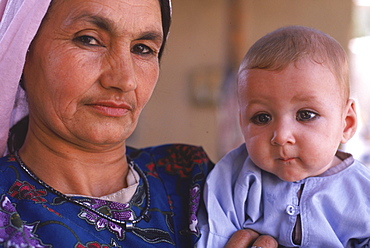
A Tajik woman holds a baby with kohl rimmed eyes, in the compound of an extended, traditional family in Mazar-i-Sharif, Balkh Province, September 25, 2002. The Tajik are one of the larger ethnic groups in Afghanistan, second only to the Pashtun people.
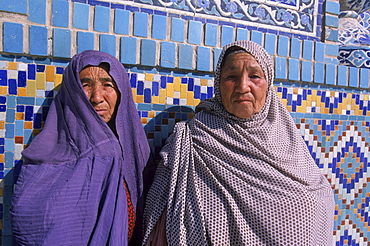
Uzbek women peek out from their veils in front of the tiled wall of the Blue Mosque, Mazar-i-Sharif, Balkh Province. The Blue Mosque is considered to be one of the most important and beautiful buildings in Afghanistan. The region around Mazar-i-Sharif is the center of the Uzbek tribe in Northern Afghanistan
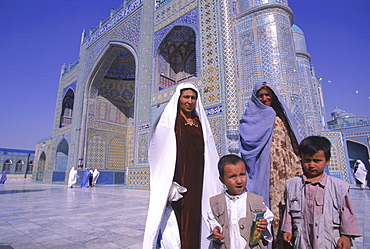
Tajik women proudly pose with their children, burqa's thrown back, in front of the main entrance to the Blue Mosque, Mazar-i-Sharif, Balkh Province. Wednesday mornings are reserved for women to come and worship at the mosque. Elaborate tilework and decorated spires adorn the mosque, also known as the Shrine of Hazrat Ali (Hazrat Ali was the son-in-law of the prophet Mohammed), who is believed to be buried here. The shrine, of particular importance for Afghanistan's Shi'ite Muslims, was first built in the 12th century, destroyed by Genghis Khan, and rebuilt in 1481. The current mosque, considered by some to be one of the most beautiful in Central Asia, is a modern restoration.
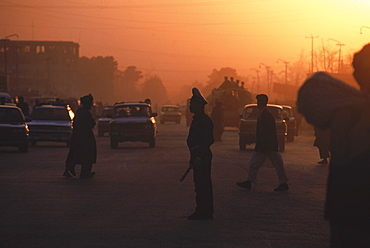
Setting sun highlights traffic and traffic cops in the center of Mazar-i-Sharif, Balkh Province, September 22, 2002. Mazar-i-Sharif (also spelled Mazar-e Sharif) is the largest city in Northern Afghanistan, and is capital of the Balkh province. It is an important city for Afghanistan's Shiite Muslims, who come to worship at the famous Blue Mosque.
